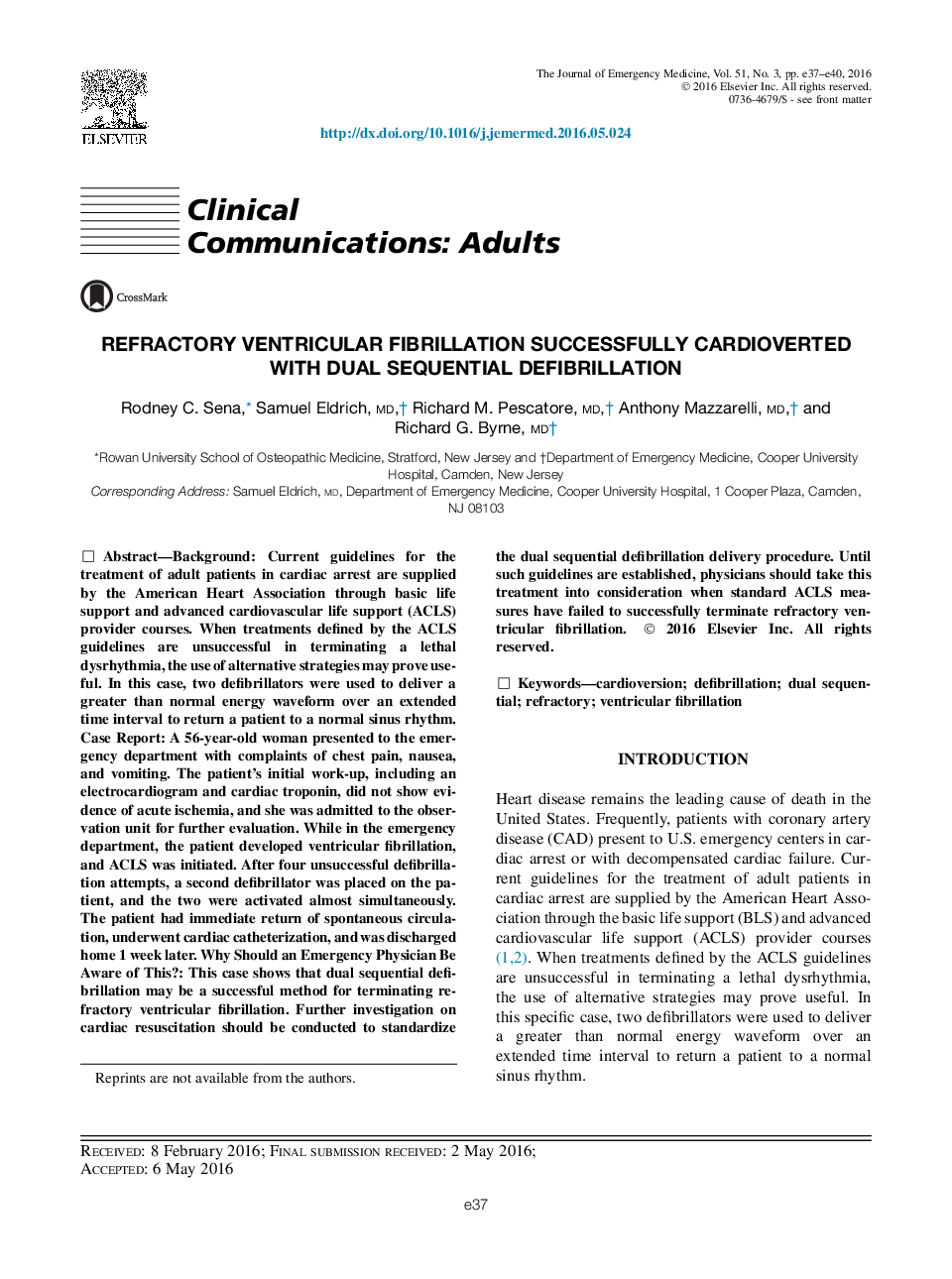| Article ID | Journal | Published Year | Pages | File Type |
|---|---|---|---|---|
| 3245639 | The Journal of Emergency Medicine | 2016 | 4 Pages |
BackgroundCurrent guidelines for the treatment of adult patients in cardiac arrest are supplied by the American Heart Association through basic life support and advanced cardiovascular life support (ACLS) provider courses. When treatments defined by the ACLS guidelines are unsuccessful in terminating a lethal dysrhythmia, the use of alternative strategies may prove useful. In this case, two defibrillators were used to deliver a greater than normal energy waveform over an extended time interval to return a patient to a normal sinus rhythm.Case ReportA 56-year-old woman presented to the emergency department with complaints of chest pain, nausea, and vomiting. The patient's initial work-up, including an electrocardiogram and cardiac troponin, did not show evidence of acute ischemia, and she was admitted to the observation unit for further evaluation. While in the emergency department, the patient developed ventricular fibrillation, and ACLS was initiated. After four unsuccessful defibrillation attempts, a second defibrillator was placed on the patient, and the two were activated almost simultaneously. The patient had immediate return of spontaneous circulation, underwent cardiac catheterization, and was discharged home 1 week later.Why Should an Emergency Physician Be Aware of This?This case shows that dual sequential defibrillation may be a successful method for terminating refractory ventricular fibrillation. Further investigation on cardiac resuscitation should be conducted to standardize the dual sequential defibrillation delivery procedure. Until such guidelines are established, physicians should take this treatment into consideration when standard ACLS measures have failed to successfully terminate refractory ventricular fibrillation.
